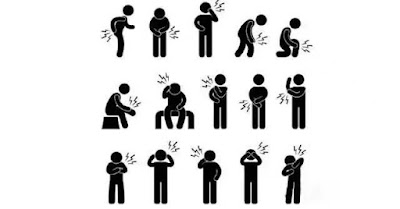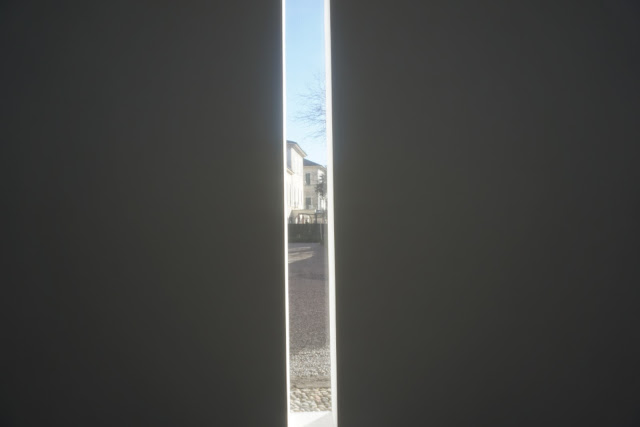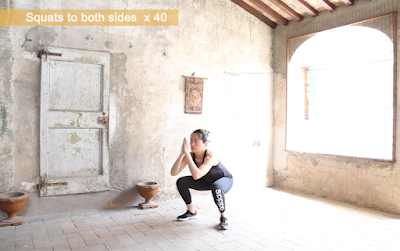The joints are rattling during workout. What's going on?
Pain or soreness, long bounce, more often in the meniscus, especially the meniscus sprain, wear and tear of the people, this noise may represent the meniscus damage again.
Pathological joint bounce is due to joint
injury, disease or structural variation, resulting in synovial roughness, joint
capsule, ligament relaxation, tendon hyperplasia or tendon sheath stenosis,
joint disc rupture, articular cartilage detachment, etc., during movement will
be due to the friction of joint tissue bounce.
It can be divided into osteogenic,
synovigenic, tendinogenic and so on according to different etiologies and
pathologies. The sound can be crisp, dull or abrasive, most of which are
accompanied by pain or discomfort, and can occur continuously.
Physiologic joint bounce is from the joint cavity clear, single, painless burst like sound. According to the sound can be divided into 3 types:
① The voice is more clear "click" or "da", the tone is high, no pain
This kind of bounce is common when we move our joints or crack our fingers or twist our wrists. This bounce is caused by the structure of the joint. The joint is related to the joint capsule, which has gas and synovial fluid. When we squeeze and twist, we will squeeze the gas, so as to make a sound.
If the body makes this kind of bounce, then it is not harmful to health, but it will damage strength. American sports scientist Castellano once showed that the joint strength will be decreased if you deliberately make the joint sound for a long time, so try to get rid of this habit.
② The voice is dull "peng" or
"ka", the tone is high, and there is no pain
The spring sound occurs due to friction
collision on the articular surface. This phenomenon is more common in sports
exercise, for example, in the weight-bearing squat, hard pull, knee joint, hip
joint will often emit spring; Or long-term inactivity, for example, after
sitting for a long time, the waist and hip may also issue bounce.
The common situation is a long time not exercise training, suddenly start training (especially heavy weight training) easy to appear this bounce; In addition, not warming up or warming up inadequately before exercise. Although this kind of bounce does not affect your health, it is not a good phenomenon that often occurs. When there is a long-term bounce, we must pay attention to it.
Because of the long-term bouncing condition, will wear cartilage tissue, and cartilage tissue is very fragile, basically irreversible after injury. Therefore, when this problem occurs for a long time, it is necessary to find a way to solve it. If you can't solve it yourself, it is recommended to see a doctor to check whether the joint synovial fluid is insufficient and so on.
③ Send out "ga" or
"creak" in the tone, no pain
This bounce is more common at the elbows
and hips. It usually occurs when a tendon or fascia sweeps into a raised bone,
with little impact on health.
Physiologic joint bounce is common in the mature stage of joint development, does not occur in the juvenile stage, in the young stage is rare or the bounce is relatively weak, in the young and middle-aged stage is more common, in the elderly stage is gradually reduced.
3, how to identify the two kinds of joint
bounce
The characteristics of physiological joint
ringing are as follows:
- Only occurs when a joint is suddenly pulled or flexed
- The joint must have a certain period of quiescence before bouncing
- The sound is clear, single and not repeated
- It is not accompanied by pain or discomfort, and often feels relaxed after bouncing
4, the common "bounce" situation
Here are some common joints that bounce:
Although the joint often has physiological joint bounce, but when a part of the body that has never been elastic, sends out a relatively obvious bounce, we must pay attention to check whether the elastic part has the following conditions:
- Is it accompanied by pain
- Whether the surrounding parts appear redness and swelling after ringing
- Whether movement is limited after bouncing
Without these conditions, don't worry about
it. If anything happens, seek medical examination in time to diagnose whether
it is inflammation of surrounding tissues, joint inflammation, etc.







Comments
Post a Comment
Your voice is very important to me. How can I better accompany you?